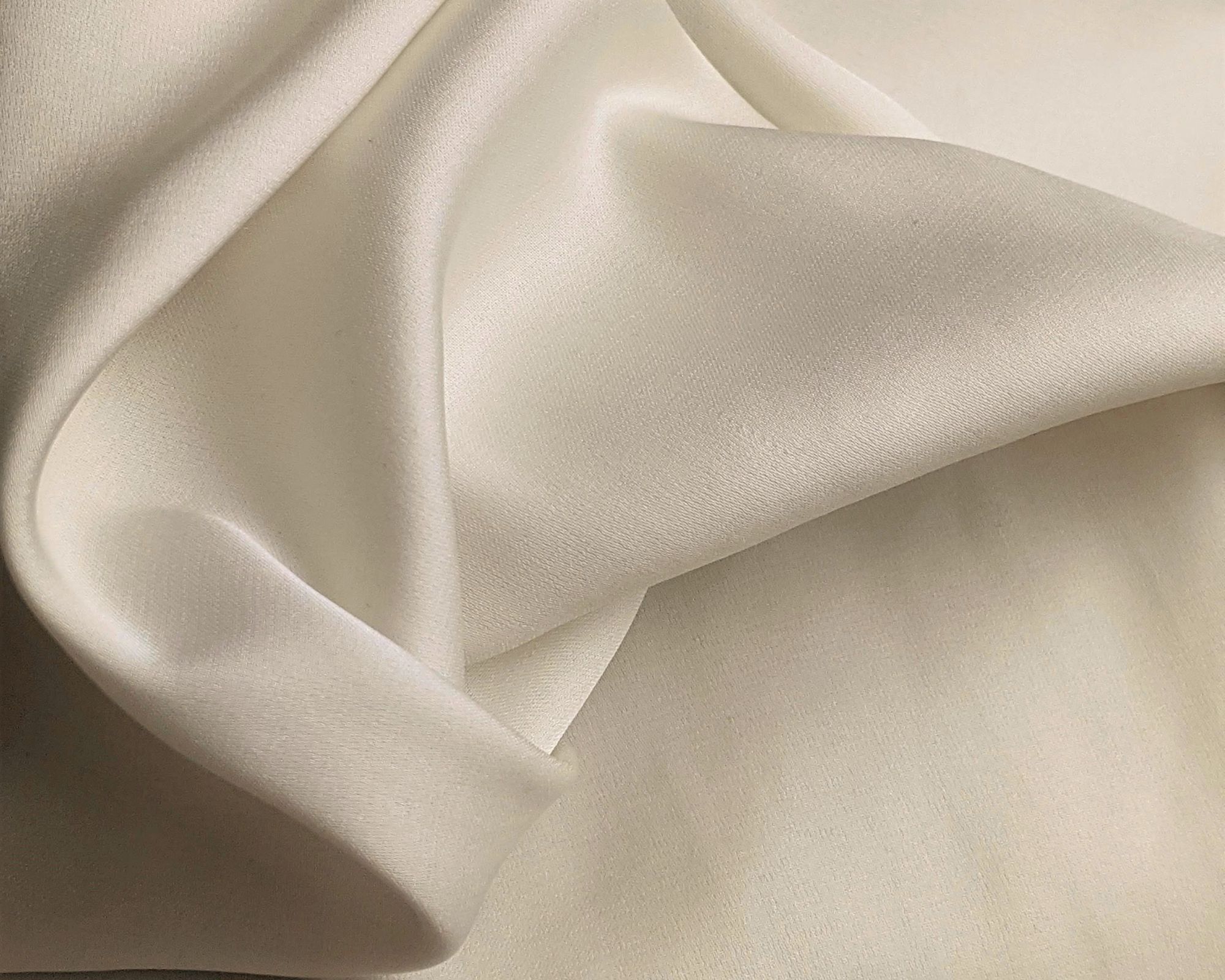When producing clothes, the fashion industry uses a wide variety of materials. They can typically be separated into three basic categories: plant-based like cotton, synthetic like polyester, or animal-derived like silk. Cupro is a curious mix of all three types, made from a combination of recycled plant-based fibres, treated with chemicals, and in the end, resembling silk. Like other rayon-type fabrics, cupro is a popular semi-synthetic option produced almost exclusively in China. But exactly what is cupro fabric? How is it made? And is it sustainable and ethical? Read on to find out.
What is cupro?
Cupro is a ‘regenerated cellulose’ fabric made from cotton waste. It is made using the teeny tiny silky cotton fibres, known as linter, that stick out of the cottonseed and are too small to spin. The linter is dissolved into a cuprammonium solution, which is a mixture of copper and ammonium, dropped into caustic soda, then spun into fibre. Much like Tencel and Modal, cupro is a plant-based material that is chemically processed to produce the resulting fabric.
Cupro is said to have all the positive qualities of silk: it’s silky-smooth and drapes just like the luxurious material. First invented in the 1900s in Germany, cupro is also commonly known as ‘Bemberg’ (from the German manufacturer, J.P. Bemberg), as well as ‘ammonia silk’ and ‘cuprammonium rayon’.
Is cupro sustainable?
The good news first: cupro is a by-product of cotton production, so it is technically a recycled textile. We know by now that cotton production is a very wasteful and intensive process—it requires a massive amount of water and pesticides when it’s not organic. So using every bit of the cotton plant helps reduce waste.
Since cupro is plant-based—unlike silk which comes from silkworms—it is vegan and cruelty-free. Plus, unlike silk again, it is machine washable, which is more eco-friendly than the dry cleaning required for delicate silk garments.
Benefits aside, there is no escaping that cuprammonium rayon is produced with intensive and harmful chemicals that can be toxic to both people and planet when not disposed of properly. Although the chemical baths are used multiple times, at some point, in some place, they must be disposed of. There is also no way to know if the raw material is a waste product from damaging cotton fields. As mentioned earlier, cupro is produced mainly in China, and as sourcing expert Sewport says, “China’s synthetic textile factories are reviled around the world as havens for modern-day slave labour.” Despite the environmental and human concerns associated with cupro production, “China continues to export tons of cupro to Western nations every year.” There are also zero certifications for cupro fabric, and its production was even banned in the USA “due to the inability of manufacturers to comply with basic air and water protection regulations.”
So while cupro is technically a recycled and cruelty-free alternative to silk, it’s not exactly ethical and sustainable, and there are other vegan silk alternatives out there worth looking into. If you must buy it, check if the brand shares information about where its cupro is made and how it’s handled. It’s equally important to consider the working conditions and manufacturing when thinking about the sustainability of a fabric. Be sure to choose brands that are transparent about their processes to make the most ethical choice for people, the planet, and animals.
















